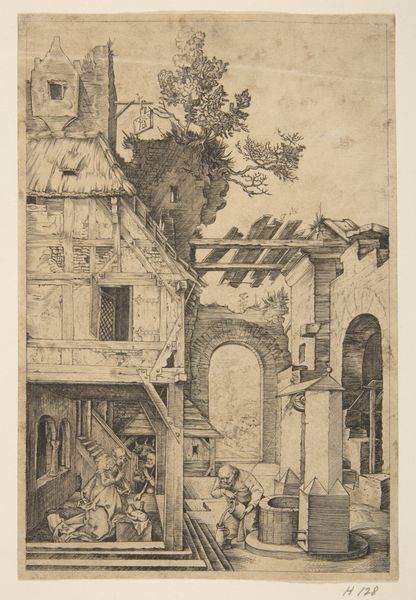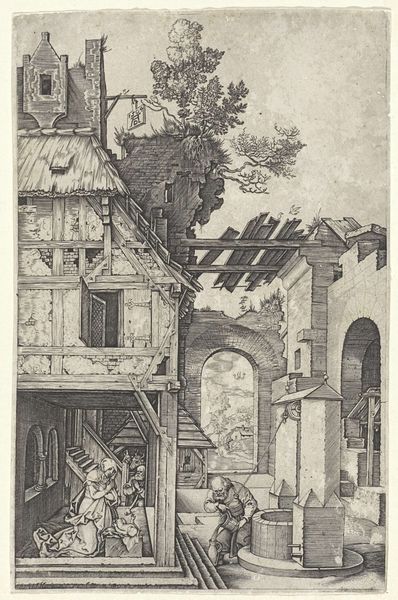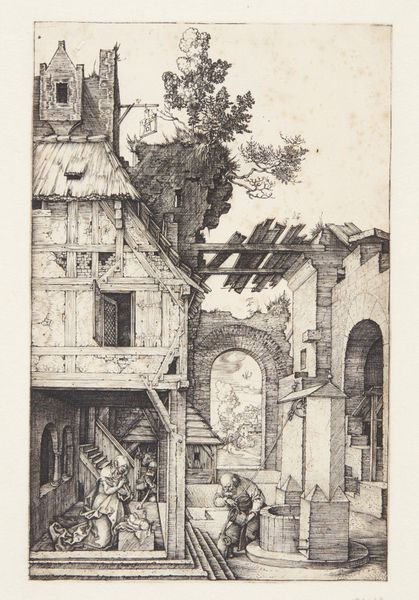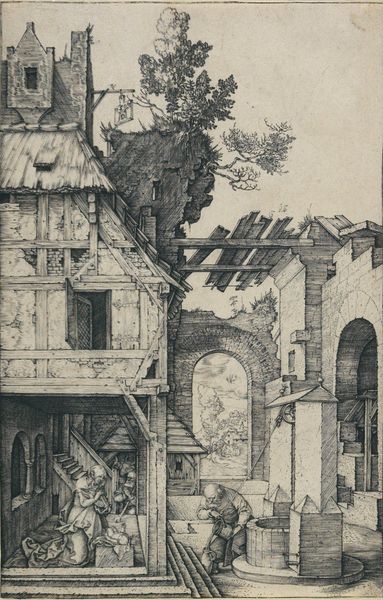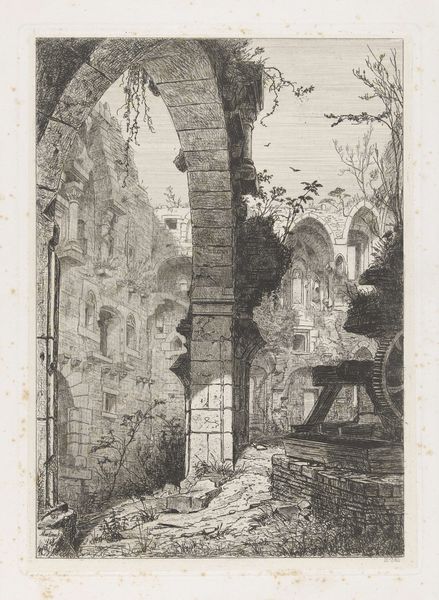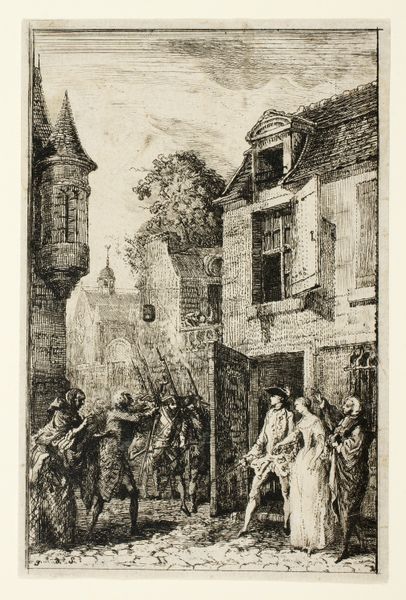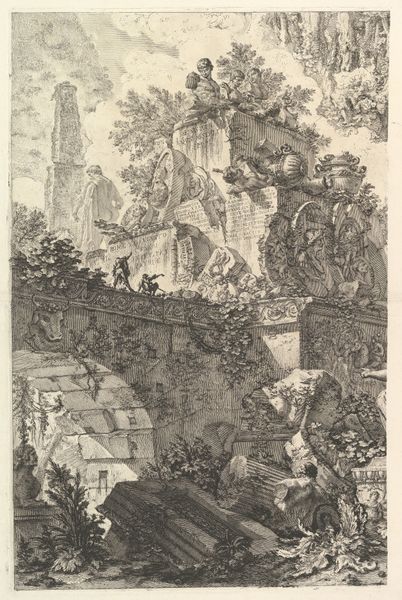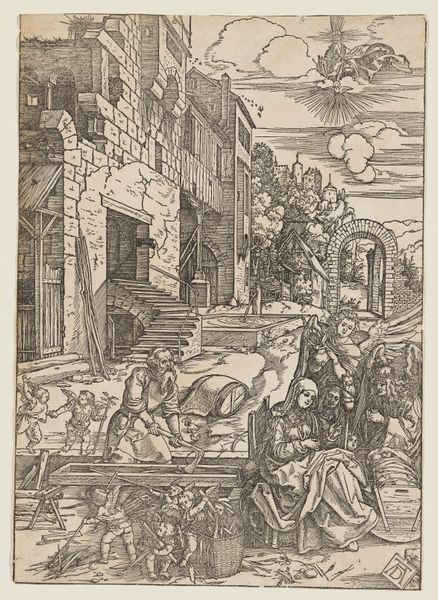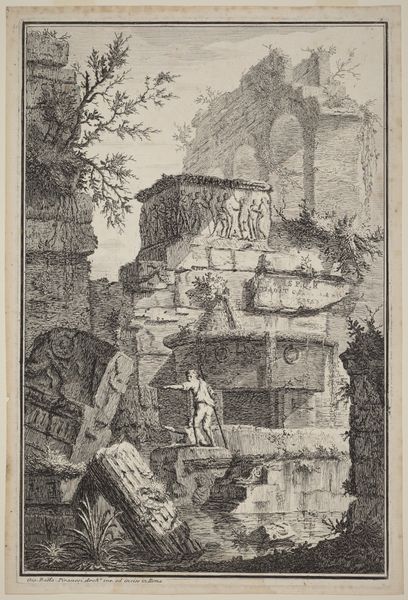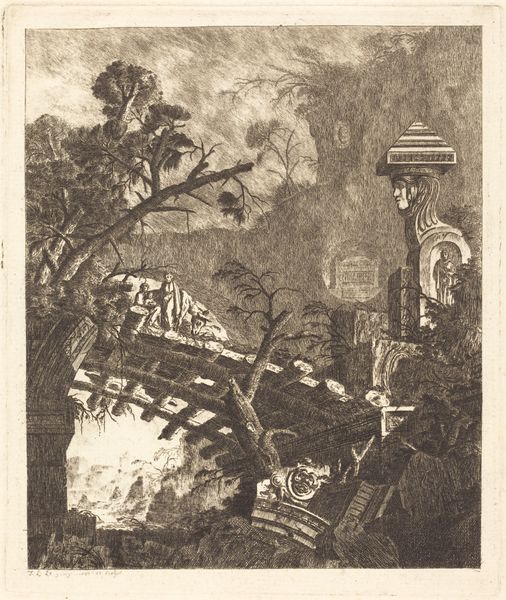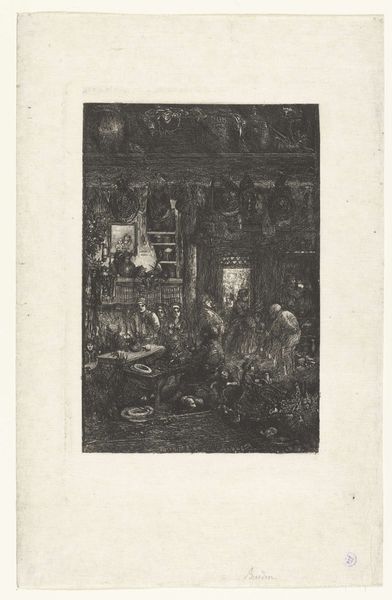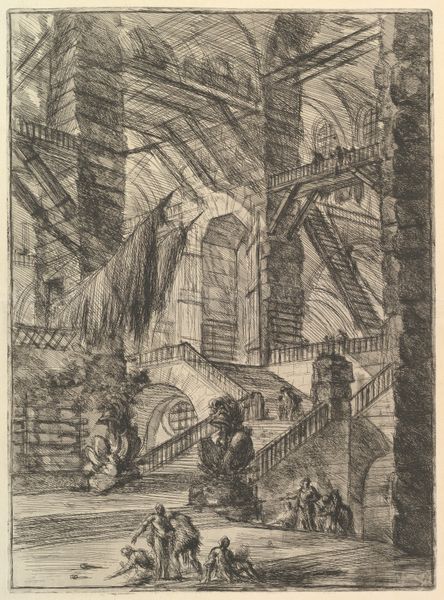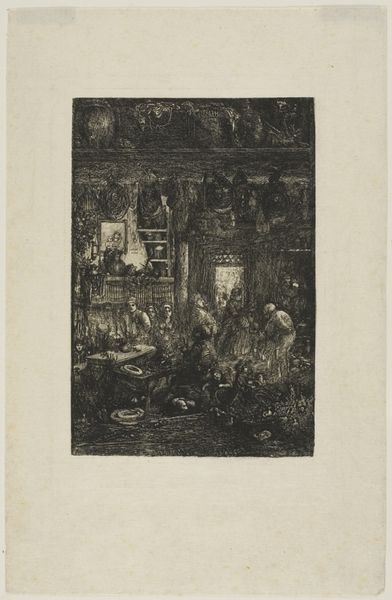
drawing, print, etching
#
drawing
# print
#
etching
#
landscape
#
figuration
#
history-painting
#
northern-renaissance
Dimensions: Sheet: 6 7/8 × 4 9/16 in. (17.5 × 11.6 cm)
Copyright: Public Domain
Editor: Here we have "The Nativity (reverse copy)," a print etched by Albrecht Durer sometime between 1485 and 1600. The stark lines create a very textured, almost chaotic image, though I can also see hints of serenity in the faces. How do you interpret this composition? Curator: Let’s consider the architectural framework first. Note how the receding planes, defined by crumbling structures and precise lines, establish depth. Observe the interplay of light and shadow across the etching – how Dürer uses hatching to articulate form. It gives this religious scene a very human, almost desolate quality, doesn't it? Editor: It really does. So the texture and lighting are a function of his medium as a printmaker? Curator: Precisely. Consider how the linear quality of etching emphasizes the forms of each subject within the image. The human figure contrasts with the stark geometric rigidity in architecture. What do you make of the building, the house? It's neither clearly habitable nor clearly in ruin. What does it communicate? Editor: Well, it seems to me the lines are saying something about transition or impermanence, with both destruction and hope visible. So, beyond the historical narrative of the Nativity, we see also how the medium creates texture that helps to build emotional layers within the piece. Curator: Indeed. Close attention to detail reveals deeper significance and layers, expanding the expressive potential of the depicted form. By analyzing these structural qualities, the emotional qualities emerge. What new understanding has this afforded you? Editor: It has emphasized the importance of really looking – focusing on the lines and composition. I think that will transform the way I engage with other art moving forward, too.
Comments
No comments
Be the first to comment and join the conversation on the ultimate creative platform.
